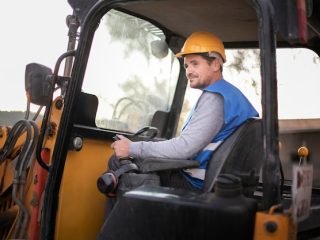
Some experts say that asbestos use might be one of the biggest mistakes we have ever made, and when you consider there were asbestos factories in the pre-WWII days where hundreds of employees were exposed to this very harmful material, it is almost unbelievable that we did not realize the potential harm this naturally fond substance caused when inhaled.
The Fire-Resistant Properties of Asbestos
This was the primary reason that asbestos was used in the manufacture of building materials, and with strict fire regulations, asbestos seemed to be the perfect solution. It wasn’t until the late 1970s that scientists began to discover that inhaling tiny asbestos slivers that are airborne and this was causing severe respiratory disease. Today, we have asbestos testing in Sydney from a government-approved asbestos removal contractor, and should you be planning a refurbishment of your home, it makes sense to have testing carried out prior to doing anything.
Building Materials That Might Contain Asbestos
Any house that was built pre-1990 might contain the following materials made from asbestos:
- Pipe lagging
- Ceiling and roof tiles
- Partition sheeting
- Insulation boards
- Coatings applied by spray
- Composite materials
- Roof felt
- Asbestos cement products
- Rope seals and gaskets
Let’s say that your home was built in the 1970s, and there is asbestos present. This does not put you in any danger, as the material is dormant, and if not disturbed, there is no risk of inhaling this harmful material. It is only when the material is disturbed that the tiny slivers become airborne, and should you or a family member inhale the material, you might not have any symptoms for years, and by the time you realize, the damage has been done.

Asbestosis can be fatal, and asbestos can cause lung cancers; in the event you are planning any renovation work, you should first make contact with a local asbestos test & removal company and book a test date. Once you are ready to renovate, here is some information about paints and stains for concrete flooring.
Asbestos Air Monitoring
The air should be monitored for the presence of asbestos in the following situations:
- Prior to disturbing materials that contain asbestos.
- Monitoring should take place during the removal process.
- After the successful removal of materials within an enclosure.
There is legislation in place to ensure that asbestos surveying, testing & removal are carried out according to high standards; it is estimated that 30% of Australian homes contain asbestos, so the removal industry is going to be very busy for a considerable amount of time.
Friable & Non-Friable Asbestos
It is important to understand the difference between friable and non-friable asbestos; friable is the most dangerous because it can be crumbled into powder with the hands, which would release many minute slivers of asbestos into the air, which, if inhaled, could cause life-threatening disease.

Non-friable asbestos is less dangerous as the material is hard, as it is mixed with a bonding agent like cement; however, if non-friable asbestos is broken up, it can become airborne, so the greatest care must be taken. Click here for a PDF file on best practices for removing asbestos.
Don’t Take Chances
It simply isn’t worth risking your or your family’s health by going ahead with a renovation without first testing for the presence of asbestos. Of course, if your home was recently built (in the last 10 years), then you can be sure that there is no asbestos within the building materials.



